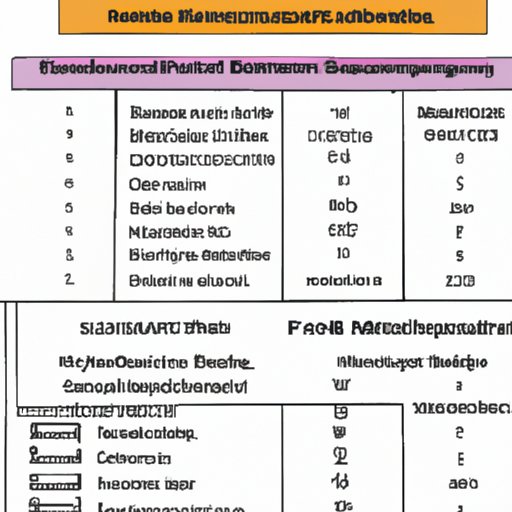Introduction
Exercise is defined as any physical activity that increases or maintains physical fitness and overall health and wellness. It can include activities such as running, walking, swimming, yoga, and strength training. Regular exercise has numerous benefits, including improved cardiovascular health, increased muscle strength and endurance, improved flexibility and balance, and enhanced mental health benefits.

A Guide to Calculating Your Own Personal Exercise Requirements
The amount of exercise you need each day depends on several factors, including your age, weight, level of physical fitness, and health status. According to the American College of Sports Medicine (ACSM), adults aged 18-64 should get at least 150 minutes of moderate-intensity aerobic activity or 75 minutes of vigorous-intensity aerobic activity each week. Additionally, adults should perform muscle-strengthening exercises at least two days per week. However, it’s important to remember that everyone is different and your individual needs may vary depending on your own personal circumstances.

Benefits of Adhering to a Regular Exercise Routine
Regular exercise has numerous benefits for physical and mental health. Research has shown that regular exercise can help reduce the risk of heart disease, stroke, type 2 diabetes, obesity, and some forms of cancer. Additionally, regular exercise can improve muscle strength and endurance, as well as flexibility and balance. Exercise can also have a positive impact on mental health, reducing stress and anxiety, improving mood, and increasing self-esteem.
The Role of Physical Activity in Maintaining Overall Health
Physical activity plays an important role in maintaining overall health and wellbeing. Regular exercise can help improve quality of sleep, reduce the risk of chronic diseases, improve cognitive function, and reduce stress. According to the World Health Organization, physical activity can also help prevent noncommunicable diseases, such as heart disease, stroke, cancer, and depression.

How to Incorporate Exercise into Your Everyday Life
Incorporating exercise into your everyday life can be a challenge, but it doesn’t have to be difficult. The key is to set realistic goals, choose activities you enjoy, make exercise a priority, and track your progress. Start by setting a goal to exercise for 30 minutes a day, three times a week. Choose activities you actually enjoy doing, such as walking, running, swimming, or yoga. Make exercise a priority by scheduling it into your daily routine and tracking your progress with a fitness tracker or smartphone app.
Conclusion
Exercise is an important part of maintaining overall health and wellbeing. The amount of exercise you need each day depends on several factors, including your age, weight, level of physical fitness, and health status. Regular exercise has numerous benefits, including improved cardiovascular health, increased muscle strength and endurance, improved flexibility and balance, and enhanced mental health benefits. Incorporating exercise into your everyday life can be a challenge, but it doesn’t have to be difficult. Start by setting realistic goals, choosing activities you enjoy, making exercise a priority, and tracking your progress.
(Note: Is this article not meeting your expectations? Do you have knowledge or insights to share? Unlock new opportunities and expand your reach by joining our authors team. Click Registration to join us and share your expertise with our readers.)
